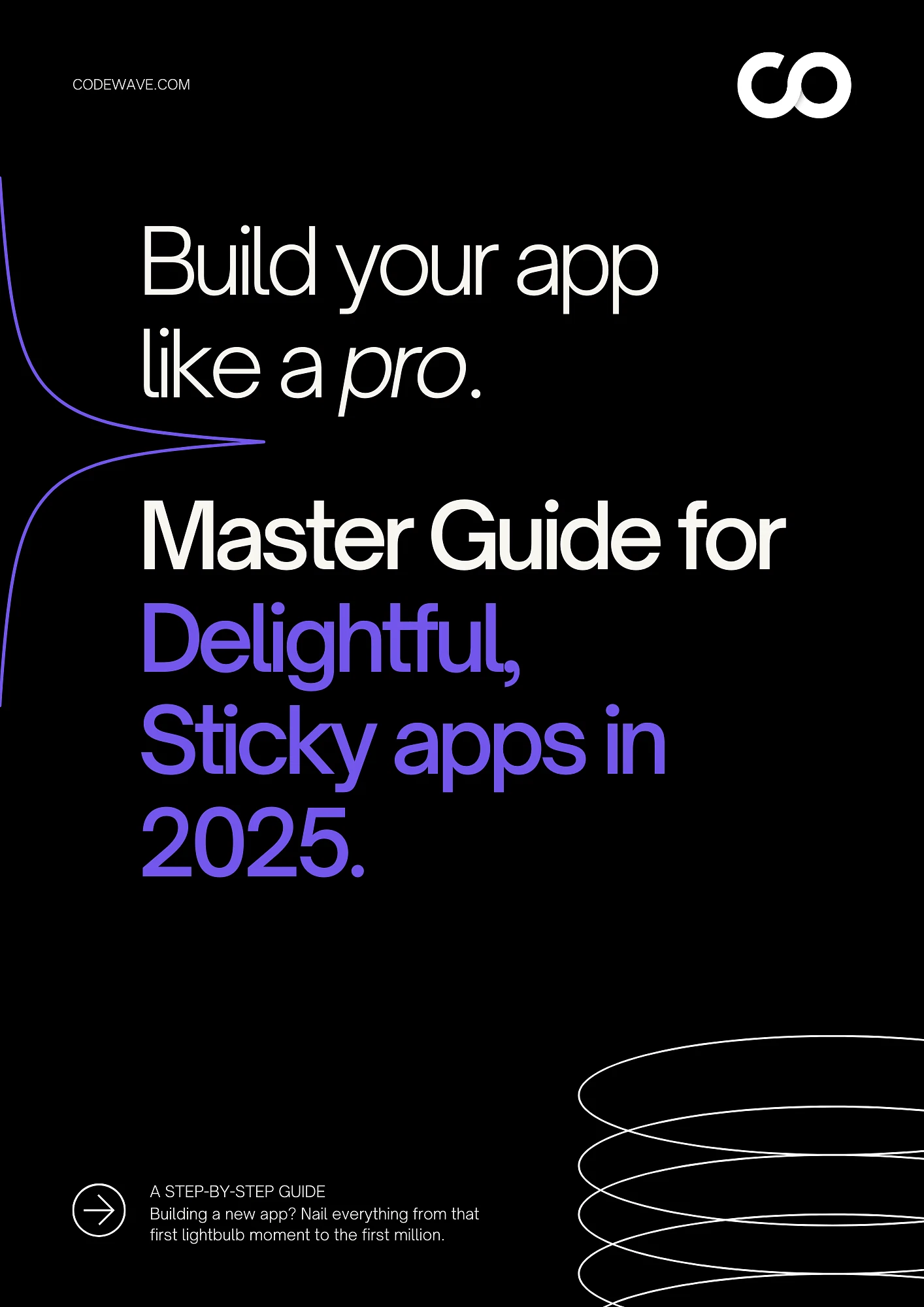With 94% of tech businesses and 71% of small businesses relying on CRM systems, it’s clear that managing customer relationships effectively is essential for growth. However, implementing a system that truly meets an organization’s needs requires more than just choosing software off the shelf.
Thoughtful planning, careful design, and precise development ensure that CRM solutions not only organize customer data but also support your team in meaningful ways. This step-by-step guide to CRM software design and development walks through the key phases and practical considerations for building a system that drives measurable business impact. Let’s get started!
Key Takeaways
- Custom CRM software design and development begins with analyzing enterprise needs, setting goals, and defining measurable KPIs.
- Feature planning, architecture design, and technology stack selection ensure scalability, security, and seamless integrations.
- UI/UX wireframes and prototypes validate workflows and usability for sales, marketing, and support teams.
- AI capabilities and automation enhance data-driven insights, routine task management, and personalized customer experiences.
- Addressing integration challenges, usability gaps, and evolving business requirements maximizes CRM impact.
Difference Between Custom and Off-the-Shelf CRM
Let’s first understand the differences between custom and off-the-shelf solutions.
| Aspect | Custom CRM | Off-the-Shelf CRM |
| Key Features | Tailored workflows, bespoke dashboards, integrations with existing enterprise systems, and customizable data models. | Standardized workflows, pre-built dashboards, limited integration options, fixed data structures. |
| Advantages | Aligns precisely with business processes, scalable to enterprise growth, flexible reporting and analytics, adaptable to evolving needs. | Quick deployment, lower upfront cost, pre-tested features, vendor support, and updates. |
| Strategic Fit | Designed to meet specific organizational goals, supports unique processes, and enhances team productivity. | Generic fit for common business scenarios, may require workarounds for specialized needs |
| Scalability | Easily scalable across departments and geographies, supports enterprise expansion. | Limited scalability, may require migration to advanced plans or new software. |
| Integration | Can integrate with ERP, HRM, marketing automation, and other internal systems. | Integration is limited to popular third-party apps or APIs. |
| Maintenance & Support | Ongoing updates and custom support tailored to the company’s needs. | Vendor-managed updates, fixed support options. |
| Cost Considerations | Higher upfront development cost, but long-term value and flexibility. | Lower initial cost but potential hidden costs for add-ons, upgrades, or workarounds. |
| Data Security & Compliance | It can be built to meet specific regulatory standards and internal policies. | Depends on vendor compliance standards; may not meet all enterprise-specific requirements. |
| User Adoption | Designed around the organization’s processes, it can improve adoption and efficiency. | May require employees to adjust workflows to fit software limitations |
These differences also highlight the need to select a CRM type that aligns with specific enterprise workflows and goals.
Recommended: Comprehensive Guide to CRM Development Process Steps.
Types of CRM Systems
Each type of CRM has a distinct approach to handling customer relationships, helping businesses streamline workflows, gain actionable insights, or strengthen collaboration across teams. Choosing the appropriate type ensures that processes, data, and communication align with business priorities.
1. Operational CRMs
Operational CRMs automate customer-facing activities such as sales tracking, marketing campaigns, and service requests. They simplify repetitive tasks, reduce errors, and ensure timely follow-ups with clients. Enterprises benefit from operational CRMs through consistent execution across departments and more time for teams to focus on strategic initiatives.
2. Analytical CRMs
Analytical CRMs focus on extracting insights from customer data to guide decision-making. These systems analyze patterns in purchasing, engagement, and service interactions to identify trends and effectively segment customers. Insights from analytical CRMs support informed planning, improve retention strategies, and help businesses align offerings with customer needs.
3. Collaborative CRMs
Collaborative CRMs improve coordination among sales, marketing, and support teams by centralizing customer information. Access to shared interaction histories allows departments to stay aligned and maintain consistent communication with clients. Enterprises gain from collaborative CRMs by reducing silos, improving internal communication, and ensuring teams can act on accurate, up-to-date information.
Now, let’s take a look at the design and development process of a custom system.
Custom CRM Design and Development Process
Developing a custom CRM system for an enterprise requires a structured approach that addresses workflows, departmental needs, and integration requirements. Each stage ensures the system supports decision-making, collaboration, and scalability.
1. Business Needs Analysis and Goal Setting
The process begins with engaging IT leaders, department heads, and business stakeholders to define objectives. Enterprises must identify how the CRM will support sales pipelines, marketing campaigns, and customer service operations.
- Identify department-specific goals and workflows.
- Determine key performance indicators (KPIs) to measure CRM effectiveness.
- Map existing processes that require automation or optimization.
- Highlight compliance and security requirements for customer data.
2. Feature Planning and CRM Architecture Design
This stage focuses on defining core modules, system workflows, and the overall architecture.
- Plan essential modules such as sales automation, marketing tracking, service management, and analytics dashboards.
- Design workflows that align with multi-department collaboration.
- Ensure the architecture supports scalability, data consistency, and future feature expansion.
- Consider integrations with ERP, HRM, marketing automation, and other enterprise systems.
3. Choosing the Right Technology Stack
Technology selection determines performance, maintainability, and integration capabilities.
- Choose secure and scalable back-end frameworks and databases.
- Decide on cloud, on-premise, or hybrid deployment models.
- Select front-end frameworks that allow responsive, role-specific interfaces.
- Ensure compatibility with legacy systems and compliance with industry standards.
4. UI/UX Wireframes and Prototyping
Wireframes and prototypes visualize workflows, dashboards, and interfaces before full-scale development.
- Map user journeys for sales, marketing, and support teams.
- Design intuitive dashboards and forms for efficient data access.
- Validate workflows and interactions with stakeholder feedback.
- Test prototypes for multi-department usability and reporting accuracy.
5. Backend and Frontend Development
This phase brings together the technical components to create a fully functional CRM system.
- Build a secure and scalable database structure.
- Develop APIs for seamless integration with enterprise applications.
- Implement front-end dashboards tailored to different roles and departments.
- Conduct iterative testing and incorporate feedback before deployment.
Once a custom CRM is developed, ensuring smooth integration with existing systems is essential to maintain consistent data flow and streamline workflows.
For more, check our blog, A Step-By-Step Guide to Understanding the Process of Custom Software Development.
How to Ensure Smooth CRM Integration?
Integrating a CRM system with existing enterprise tools is essential for unified workflows, accurate data, and efficient operations. Key considerations for successful integration include:
- Connect email platforms, VoIP systems, ERP solutions, and other critical tools to centralize customer interactions.
- Maintain consistent and real-time data flow between systems to avoid discrepancies and ensure reliable reporting.
- Adopt an API-first architecture to enable flexible, scalable integration with both current and future enterprise applications.
With integrations in place, enterprises can include AI capabilities within the CRM to gain insights, automate tasks, and enhance customer interactions.
Also Read: Product Development Steps and Best Practices.
Implement AI Capabilities to Enhance Your CRM
Artificial intelligence enhances CRM systems by turning data into actionable insights, automating routine processes, and delivering personalized experiences across departments. Key AI capabilities include:
- Predictive analysis to anticipate customer behavior, identify high-value leads, and forecast sales trends.
- Automation of repetitive tasks such as data entry, follow-ups, and ticket routing, freeing teams to focus on strategic initiatives.
- Personalization of customer interactions across channels, improving engagement, retention, and satisfaction.
Furthermore, you must also evaluate costs, project scope, and timelines to ensure the CRM delivers value efficiently.
Recommended: Top 12 Tech Innovations and Trends in 2025 with Examples.
Key Cost and Timeline Factors for Custom CRM
Planning the budget and timeline for a custom CRM design and development is critical to ensure alignment with business goals and resource allocation. Key factors to keep in mind include:
- Feature Complexity and Integrations: Development cost is influenced by the number and complexity of features, required integrations with existing systems, security requirements, and technology stack choices.
- Project Size, Scope, and Users: The scale of the project, including the number of users and departments involved, impacts both cost and resources needed for design, development, and testing.
- Timelines for MVP and Full CRM: Typical timelines vary. MVP versions may take several weeks to a few months to complete. Meanwhile, full-featured enterprise CRMs can require several months to a year, depending on complexity and stakeholder approvals.
With cost and timelines clearly defined, the next focus is addressing common design challenges to ensure the CRM is both usable and effective across the enterprise.
You might also be interested in: Machine Learning App Development: A Complete Guide.
Challenges and Solutions in CRM Design
Designing a CRM system that meets enterprise needs comes with its own set of challenges. Addressing these issues early ensures usability, adoption, and long-term value.
Common Design Mistakes to Avoid
- Overloading the system with unnecessary features can reduce adoption and increase complexity.
- Ignoring integration requirements with existing enterprise tools like ERP, marketing automation, or customer service platforms.
- Failing to plan for scalability can create bottlenecks as the organization grows.
Ensuring Usability and Accessibility
- Design interfaces that accommodate different user roles and responsibilities within the organization.
- Maintain intuitive workflows and navigation to minimize training requirements.
- Implement accessibility best practices to ensure all employees can use the system effectively, regardless of ability.
Maintaining Updated Visual and Functional Design
- Keep dashboards, forms, and workflows aligned with current business processes to prevent outdated interfaces.
- Update functionalities as new integrations or AI capabilities are added to avoid friction in daily operations.
- Monitor user feedback to continuously refine the CRM and improve adoption rates.
Enterprises often struggle with pre-built software, paying for features they don’t use. If you’re looking for an alternative, Codewave specializes in building custom CRM solutions tailored to enterprise needs.
Why Codewave is the Right Choice for CRM Development
Codewave builds lean, custom CRM solutions that focus on the 20% of features delivering 80% of the impact. Most software is bloated with unnecessary functionality. Meanwhile, our approach ensures your CRM is tailored, efficient, and high-value. With over 400 web and mobile apps delivered across 15+ industries, we combine experience, speed, and innovation to meet enterprise needs.
- Lean, High-Impact Solutions: Focus on essential features that drive real business results.
- Faster Development with Code Accelerate: Pre-built, battle-tested modules reduce time-to-market and cost.
- Human-Centric Design & Emerging Tech: Intuitive, scalable systems powered by AI and modern technologies.
- Proven Enterprise Experience: Delivered solutions for 300+ businesses, VC-backed startups, SMEs, and governments globally.
Check our case study here to see how we make it happen!
Final Thoughts
Effective CRM design begins with careful planning of business needs, key features, system architecture, and user experience. A well-designed CRM supports workflows, encourages collaboration, and enables data-driven decisions. Even with a well-thought-out plan, enterprises often face challenges such as inefficient integrations, underused features, and gaps in automation that limit the system’s impact.
Custom solutions that address these gaps can unlock the full potential of CRM investments. Codewave builds tailored systems that align with enterprise processes, integrate seamlessly with existing tools, and optimize workflows.
Connect with us today to create a CRM that drives measurable results, boosts team productivity, and enhances customer engagement.
Frequently Asked Questions
Q. What is the difference between a custom CRM and an off-the-shelf solution?
A: Custom CRMs are tailored to an enterprise’s workflows, integrations, and scalability needs, while off-the-shelf solutions offer generic features that may not align with specific business processes.
Q. How long does it take to develop a custom CRM?
A: Timelines vary based on project scope and complexity. MVP versions typically take several weeks to a few months, while full-featured enterprise CRMs can take several months to a year.
Q. Which systems should a CRM integrate with?
A: Effective CRMs integrate with ERP, HRM, marketing automation, email, VoIP, and other enterprise tools to ensure smooth data flow and unified workflows.
Q. How can AI improve CRM performance?
A: AI enables predictive analysis, automates routine tasks, and personalizes customer interactions, helping teams make data-driven decisions and enhance engagement.
Q. How can enterprises control CRM development costs?
A: Costs are influenced by feature complexity, integrations, project size, and technology choices. Careful planning, phased development, and prioritizing essential features help optimize investment.
Codewave is a UX first design thinking & digital transformation services company, designing & engineering innovative mobile apps, cloud, & edge solutions.







